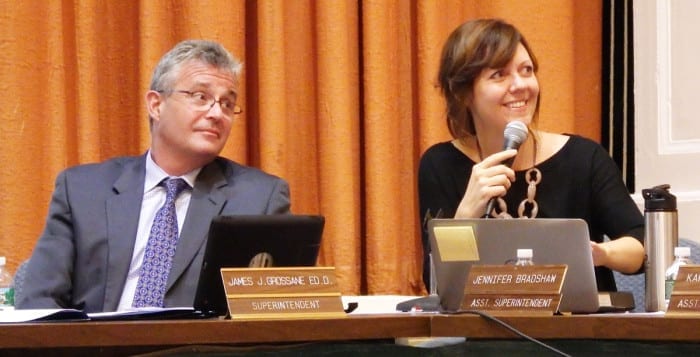Last week, I wrote about factors that increase the risk of gallstones, an all-too-common gastrointestinal problem. Many of these factors are modifiable. Continuing on the topic, this week I will discuss complications and prevention techniques.
Complications include cardiovascular disease, psoriasis and pancreatitis. I’ve written in the past about the gallstone-pancreatitis association. Here, I will focus on other complications.
Cardiovascular complications
Cardiovascular disease, comprised of heart disease and stroke, is responsible for about 45 percent of deaths in the United States. In a recent observational, prospective (forward-looking) study, the results show an overall 32 percent increased risk of cardiovascular disease in patients with gallstones (1). When these results are further broken out, there was a 42 percent increased risk of heart disease, a 15 percent increased risk of stroke and a 31 percent increased risk of heart failure. These results are scary.
Interestingly, those who were younger, 18 to 40 years old, were at the highest risk of developing cardiovascular disease. And those who had mild gallstone disease were at higher risk, as well. This study was six years in duration and involved more than 34,000 patients. The authors hypothesized that the possible reason for this association between gallstones and cardiovascular disease may have to do with an abundance of cholesterol, inflammation and oxidative stress.
Psoriasis and psoriatic arthritis
In the Nurses’ Health Study II, a prospective observational trial, results show that there is a 70 percent increased risk of developing psoriasis and a 196 percent increased risk of developing psoriatic arthritis in women who have a personal history of gallstone disease (2). These results were segregated from obesity. In fact, this association between gallstones and psoriasis was greatest in those who had a body mass index of <30 — a threefold increased risk.
This is not an excuse to be obese, however, because there was still a significantly increased risk, 1.71-fold, in the obese group. There were 89,234 women involved in this study over a 14-year follow-up period. As with cardiovascular disease’s association with gallstones, inflammation also may play a role with gallstones and psoriasis and psoriatic arthritis. Therefore, it may be important to reduce inflammation in the body to prevent gallstones and their complications.
Prevention
Fortunately, there are several ways to reduce the occurrence of gallstones, including lifestyle changes with exercise and diet, such as coffee, more fiber, statins and unsaturated nontrans fats (3).
Physical activity
In last week’s article on risk factors for gallstones, low physical activity increased the risk of this disease. It turns out that the opposite is also true. In the Physicians’ Health Study, results showed a significant reduction in the risk of gallstones in those in the highest quintile of activity compared to those in the lowest quintile (4). In fact, men who were in the highest quintile and under 64 years old saw the greatest reduction — 42 percent — in the risk of gallstones. However, those over the age of 65 and in the highest quintile of activity also had substantial reductions in risk — 25 percent. There were 45,813 men involved in this study over an eight-year duration. The authors concluded that, overall, 34 percent of symptomatic gallstones could be avoided if men did aerobic training for an average of 30 minutes per day, five days a week.
Fruits and vegetables
If you ever needed another reason to consume more fruits and vegetables, reducing the risk of gallstones may motivate you.
In the Nurses’ Health Study, the results showed that those in the highest quintile of fruit and vegetable intake had a 21 percent reduction in the need for a cholecystectomy (surgery to remove the gallbladder, usually due to symptomatic gallstones) compared to those in the lowest quintile (5). Interestingly, fruits and vegetables looked at separately had the same significant reduction as fruits and vegetables taken together. There were 77,090 women involved in the study with a 16-year duration.
The fruits and vegetables consumed in the study were common; they included citrus fruits, green leafy vegetables, cruciferous vegetables and other vitamin C-rich fruits and vegetables. The authors surmise that the effect may be due to antioxidants, vitamin C, dietary fiber and minerals like magnesium — and to the interactions among these different components.
This was not just a reduction in gallstones, but a reduction in the actual number of surgical procedures. This makes it a very powerful study. To give perspective, there are around 800,000 cholecystectomies done each year in the United States (6).
Rapid weight loss diets
I mentioned in last week’s article that rapid weight loss increases the risk of gallstone formation. However, if you were going to attempt a rapid weight loss diet, which is better: high fiber or high animal protein? Well, in a small, randomized controlled study, the gold standard of studies, results show that a high-fiber, very low calorie diet had one-third the number of patients with gallstone formation compared to a high-protein, very low calorie diet (7).
Although it is better not to lose weight rapidly, as far as gallstones are concerned, there may be lower risk with a high-fiber diet rather than with an animal-protein-dominant diet. It is important to note that this study considered rapid weight loss to be more than 20 pounds in a month. Both groups lost about the same amount of weight. However, the high-fiber diet resulted in less biliary sludge. The study included 68 patients with a mean BMI of 35 kg/m2, severely obese, at the start of the trial.
Coffee effect
Coffee must be one of the more controversial beverages. Using the Swedish Mammography Cohort and the Cohort of Swedish Men studies, a meta-analysis of two studies, the results show that only women, not men, had a significantly reduced risk of undergoing cholecystectomies in those who drank at least six cups of coffee a day, versus those who drank fewer than two cups (8). And this effect was not seen in all women, but only in those women who were premenopausal or on hormone replacement therapy. A cup was considered eight ounces. Does this mean these specific women should drink more coffee? Not necessarily, for it seems as if every good result is balanced out with a bad result when it comes to coffee and gallstones.
In conclusion, it is important to prevent gallstones since this disorder can lead to significant complications, including cardiovascular disease and death. Lifestyle modifications and even some medications may reduce the risk of gallstones, which in turn could have a beneficial impact on reducing heart disease and strokes, as well as autoimmune diseases, such as psoriasis and psoriatic arthritis. Inflammation seems to be the common denominator when it comes to gallstones, their complications and the ways to prevent them.
References:
(1) PLoS One. 2013 Oct 3;8(10):e76448. (2) Br J Dermatol. online Oct 11, 2014. (3) uptodate.com. (4) Ann Intern Med. 1998;128(6):417. (5) Am J Med. 2006;119(9):760. (6) AdvData. 2002;(329):1-19. (7) Georgian Med News. 2014;(231):95-99. (8) Clin Gastroenterol Hepatol. online Sep 19, 2014.
Dr. Dunaief is a speaker, author and local lifestyle medicine physician focusing on the integration of medicine, nutrition, fitness and stress management. For further information, go to the website www.medicalcompassmd.com or consult your personal physician.














